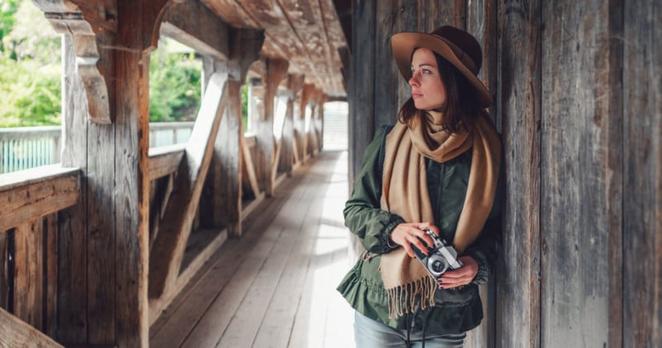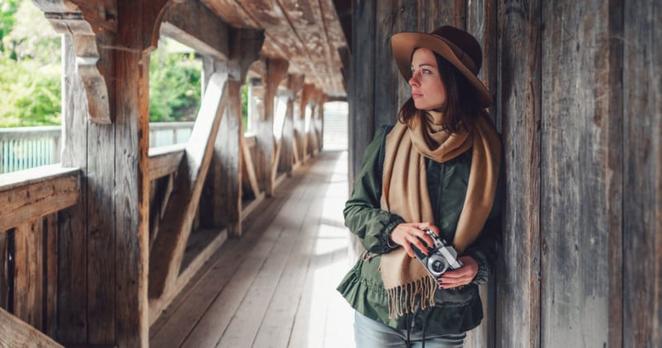https://www.alojapan.com/1218594/the-ultimate-photography-tour-in-osaka-japan-%f0%9f%87%af%f0%9f%87%b5-including-day-trips-outside-of-osaka/ The ultimate photography tour in Osaka, Japan 🇯🇵, including day trips outside of Osaka. #Japan #JapanDestinations #JapanPhotography #JapanTour #JapanTravel #JapanTrip #JapanVacation #JapanVlog #Osaka #OsakaJapan #OsakaPhotoWalk #OsakaPhotography #OsakaVlog #PhotoWalk #photographer #PhotographyAdvice #TravelPhotography The ultimate photography tour in Osaka, Japan 🇯🇵, including day trips outside of Osaka. Join me on a photo walk as we explore…
#PhotographyAdvice
Seeking advice from more experienced photographers (especially of birds/bugs/nature!): one of the biggest things I'm struggling with is exposure, and specifically getting very overexposed bird shots on bright sunny days. My googling and reading of various articles have contained a lot of contradictory advice which leaves me where I am, which is not knowing what settings to change when I'm encountering this problem and feeling really frustrated. So I thought, there's lots of great photographers here, why not ask?? What's your advice? What settings do you use in bright sunny conditions of direct light? What am I doing wrong?
For context: I'm shooting on an old Canon rebel T3 DSLR with Canon's lowest end 75mm-300mm lens. EDIT (further context) I'm very new to using manual settings on a camera and have mainly been shooting in aperture priority mode while trying to get the hang of aperture/ISO/manual focus, but clearly I need to expand beyond this ASAP to get the shots I want.
Thanks so much for any advice or insights!
#photography #birdphotograhy #naturephotography #photographyadvice
"Every photographer should get a 50mm lens" is bad #PhotographyAdvice that refuses to go away.
#Photographers (Amateur & Pro): What is the best and worst advice you’ve ever gotten? It can be about cameras, gear, shooting, editing, whatever.
#PhotographerRant #PhotographyAdvice #Photography #PhotographyIsArt
I’m looking for advice on printing and framing photos for sale/gallery display. It’s just so expensive to get something done professionally, and store-bought frames always look cheap. I can’t realistically expect someone to buy one of my photos for $300 or $400 even though that’s what I would have to charge to just break even with the gallery’s cut. What do other non-pros do when you want to show your work professionally? #photography #photographyadvice #filmphotography
Any photographers on here have a recommendation for a camera sling they like (I think that’s what I want but I’m open to being convinced on a clip/wrist strap/etc)?
I see a range of recommendations online. Is the peak design system worth the higher prices?
I’m a complete amateur who likes to take my DSLR on hikes and walks through the city when traveling.
With the #photography tag, questions and discussion can get lost amid all the photos being shared. I've made a few posts using the #PhotographyDiscussion tag.
Some other potentially useful tags that came up when I did a hashtag search:
#PhotographyTip
#PhotographyGear
#PhotographyTalk
#PhotographyAdvice
#PhotographyTheory
#PhotographyThoughts
#PhotographyQuestions
Over a decade ago I started writing about photography and now I have a blog section on my website to share those moments when I am compelled by words.
It's not all about photos :)
No One Needs to See Your Photography
Sharing photographic work online for the world to view has become an integral part of the modern photographer's workflow, whether they are a hobbyist or a professional. This inspiring 9-minute video, however, challenges the notion of sharing work online and argues that it might actually benefit photographers to focus on their craft instead.
Alex Kilbee, the British photographer behind the YouTube channel “The Photographic Eye,” discusses the change that photography has undergone due to the advent of social media, which has perpetuated the idea that any and all photographers should share -- and ideally, do so regularly to appease algorithms to garner engagement -- their work online.
Kilbee says that the fact that photographers can reach a worldwide audience and have millions of eyes on their work is a novel concept and certainly wasn't the case decades ago. For most amateur photographers, the only way to have a large audience view their work would mean succeeding in competitions, having exhibitions, or getting published in magazines. For the most part, however, the work would go unseen.
Kilbee also believes that this shift has warped the perspective on what photography should be because the focus has now turned towards pleasing the viewer. This then enters a cycle of continuously acquiring more engagement and likes by appealing to the audience and what it wants, which consequently gives validation to the photographer. However, this cycle ignores the photographer's own needs and reasons for shooting, including the simple act of shooting for joy and pleasure.
A notable example of someone who enjoyed photography purely for their own enjoyment is Vivian Maier, now considered a street photography icon. Her unassuming photographs of Chicago, New York City, and Los Angeles, taken during her time working as a nanny, painted a unique portrait of the society and the culture during the 1950s, 1960s, and beyond. However, she didn't take them in the hopes that her work will be published, exhibited, and recognized. She simply enjoyed photography as a means of expression and as a hobby that she truly enjoys.
View this post on Instagram
Maier's work finally came to the world's attention after a 26-year-old real estate agent named John Maloof purchased a box filled with 30,000 negatives at an estate sale for $400 in 2007. Once unknown, Maier is now considered one of the greatest street photographers of the 20th century.
This is in stark contrast to what Kilbee sees as a certain type of modern photographer who almost feels entitled to have their work seen and shared by hundreds or thousands of strangers online. He invites the audience to rethink what photography and success mean to each individual and notes that choosing to share work does not make anyone more of a photographer than someone who chooses not to, even though the modern world might push one to believe otherwise.
Kilbee concludes his video with the advice for photographers to stop worrying about who will or won't see their work and how to get it seen by a wider audience, and instead encourages photographers to ask themselves why they take images in the first place, which will fuel the motivation and excitement to continue pursuing photography for years.
More of Kilbee’s educational and inspirational videos can be found on his YouTube channel
#inspiration #adviceforartists #adviceforbeginners #alexkilbee #photography #photographyadvice
How to Teach Yourself to See the ‘Secret’ Photo Moments Others Miss
Photographers will sometimes wonder why someone standing right next to them can find the perfect photograph, but they are left wondering how they even saw it to begin with. This short nine-minute video discusses how to learn to see those "secret" moments that can be easily missed.
Alex Kilbee, a British photographer and content creator through his YouTube channel "The Photographic Eye," has worked as a professional in the industry for around thirty years. In a recent video, he shared ways that can help photographers of all levels unlock the ability to see and capture photographs all around them.
Kilbee's first tip is to start "searching" which in turn develops our way of seeing. The latter is a topic often written about, however, Kilbee notes that if a photographer is not physically out there, it's impossible to "see," let alone achieve a shot. He says that whether photographers have shelves full of the latest equipment or are well versed in photography techniques, at the end of the day it doesn't matter because a great image can only be achieved if the photographer is willing to go out and search for it.
By Alevision.co on Unsplash
Kilbee adds that what is an exciting subject for some, might not be to others, and instead advises photographers to seek out subjects that are appealing to them specifically. Also, he urges views to be open to spontaneous images along the way, instead of going out with a particular picture in mind. This shift in frame of mind can lead to photographs that excite, regardless of the subject.
When it comes to how photographers remember certain moments during which photographs were taken, Kilbee says it can often leave them disappointed when they later review the results. The human senses, such as sounds, noises, the warmth of the sun on the skin, are a part of the experience but don't automatically transfer across to the image. Photographers shouldn't rely on these to carry the moment and instead should block them out to be left with just the visual elements of the scene.
By Ray Hennessy on Unsplash
When it comes to the composition, Kilbee recommends photographers break away from the more traditional framing where the whole subject is visible and focus more on fragments of a scene instead. Photographing parts of things or even people can help develop a photographer's way of seeing the world in a unique way which in turn leads to powerful compositions. In this case, the exclusion of elements is just as important as the choice of what is included.
Photographing the whole scene, on the other hand, brings another set of complexities. Kilbee notes that in this situation, the subject carries the weight of the scene, and the photographer has to treat it with attention and love and make it stand out.
Similarly, when working with a subject, the context of the visual story can add another dimension to the photograph as long as those elements are visually expected. For example, seeing a horse in a field or stables, or a boat in a harbor aren't particularly noteworthy because the elements are where they would normally be found.
By Quino Al on Unsplash
If the photographer has a good idea about their composition that could show these contrasting elements, an image like this can take the viewer by surprise and engage them more.
Lastly, Kilbee reminds viewers about the power of choosing the "right" viewpoint. Experimenting with a variety of viewpoints -- especially ones that are not within our direct eye line -- can show the chosen subject from a perspective that might not be generally expected and it can also show a different look at the relationship between two or more subjects.
By Chris Barbalis on Unsplash
The way that a photographer sees the world is unique and Kilbee encourages photographers to nurture and develop it further. He adds that to create the very best images each photographer is capable of, one must retrain their eyes, however as most skills, it simply requires perseverance and willingness to go out and try.
More of Kilbee's educational and inspirational videos can be found on his YouTube channel.
Image credits: All images sourced from Unsplash and individually credited, with the main header image by Carmine Savarese.
#inspiration #tips #compose #composition #compositiontechniques #photography #photographyadvice #photographycomposition

